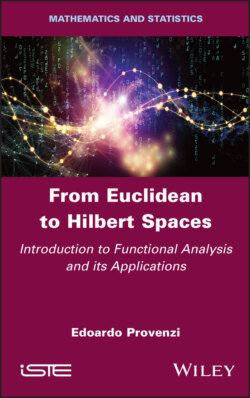Читать книгу From Euclidean to Hilbert Spaces - Edoardo Provenzi - Страница 17
1.3. Orthogonal and orthonormal families in inner product spaces
ОглавлениеThe “geometric” definition of an inner product in ℝ2 and ℝ3 indicates that this product is zero if and only if ϑ, the angle between the vectors, is π/2, which implies cos(ϑ) = 0.
In more complicated vector spaces (e.g. polynomial spaces), or even Euclidean vector spaces of more than three dimensions, it is no longer possible to visualize vectors; their orthogonality must therefore be “axiomatized” via the nullity of their scalar product.
DEFINITION 1.5.– Let (V, 〈, 〉) be a real or complex inner product space of finite dimension n. Let F = {v1, · · · , vn} be a family of vectors in V . Thus:
– F is an orthogonal family of vectors if each different vector pair has an inner product of 0: 〈vi, vj〉 = 0;
– F is an orthonormal family if it is orthogonal and, furthermore, ‖vi‖ = 1 ∀i. Thus, if is an orthogonal family, is an orthonormal family.
An orthonormal family (unit and orthogonal vectors) may be characterized as follows:
δi,j is the Kronecker delta5.
